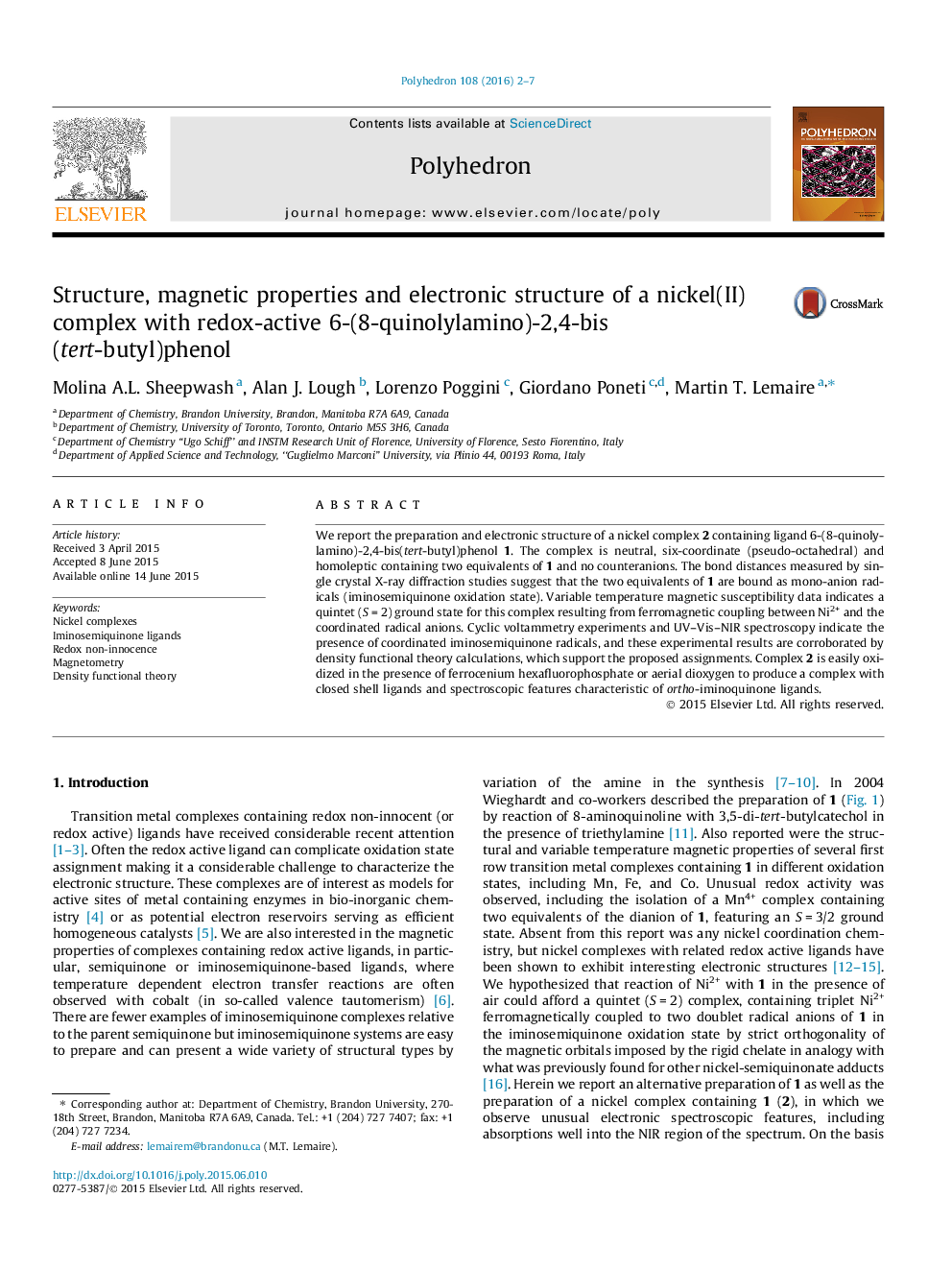| کد مقاله | کد نشریه | سال انتشار | مقاله انگلیسی | نسخه تمام متن |
|---|---|---|---|---|
| 1336534 | 1500232 | 2016 | 6 صفحه PDF | دانلود رایگان |

We report the preparation and electronic structure of a nickel complex 2 containing ligand 6-(8-quinolylamino)-2,4-bis(tert-butyl)phenol 1. The complex is neutral, six-coordinate (pseudo-octahedral) and homoleptic containing two equivalents of 1 and no counteranions. The bond distances measured by single crystal X-ray diffraction studies suggest that the two equivalents of 1 are bound as mono-anion radicals (iminosemiquinone oxidation state). Variable temperature magnetic susceptibility data indicates a quintet (S = 2) ground state for this complex resulting from ferromagnetic coupling between Ni2+ and the coordinated radical anions. Cyclic voltammetry experiments and UV–Vis–NIR spectroscopy indicate the presence of coordinated iminosemiquinone radicals, and these experimental results are corroborated by density functional theory calculations, which support the proposed assignments. Complex 2 is easily oxidized in the presence of ferrocenium hexafluorophosphate or aerial dioxygen to produce a complex with closed shell ligands and spectroscopic features characteristic of ortho-iminoquinone ligands.
We describe the structural, electronic and magnetic properties of a nickel(II) complex with a redox-active iminosemiquinone ligand. X-ray diffraction data clearly indicates the radical anion iminosemiquinone oxidation state for the coordinated ligands, and a ferromagnetic interaction is observed between the ligands and the nickel(II) ion. We investigate the electronic properties of this complex by cyclic voltammetry and UV–Vis spectroscopy and observe low energy transitions involving primarily the ligand centered frontier orbitals.Figure optionsDownload as PowerPoint slide
Journal: Polyhedron - Volume 108, 29 March 2016, Pages 2–7